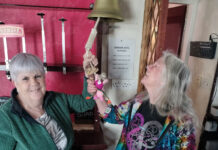IN my never ceasing quest to find you, dear SLTN reader, an interesting snippet or distraction from the wonderful world of wine, I do believe I have come across a humdinger!
Bear with me while I get the science bit out the way. Synaethesia is the word describing the association between senses – in other words the concept that your senses don’t work in isolation.
The most recent example of the theory was on the TV recently, where a programme showed that certain people can ‘see’ music in certain colours; in fact different musical pitches can even take on a specific hue of a colour, it seems. Nabokov, the author of Lolita, saw colour with certain sounds and the artist Kandinski heard music when he splashed paint on his canvases. Scientists don’t know why it happens, just that it does in some people.
A study conducted by the University of Edinburgh found that about four per cent of the population have some type of synaesthesia – that’s more than two million people in the UK – meaning it could even be you!
This idea fascinated me when I saw it on the telly, so I was delighted to read recently that two Oxford research scientists have tested the link between sound and smell. In the lab, 30 volunteers were isolated then required to sniff 20 different smells from a wine tasting kit, and then match what they smelt to one of 52 musical sounds and pitches played to them.
Now here’s the really cool bit: on collating the results boffins found that there were clear agreements between the sensory guinea pigs! Analysis showed that when the volunteers were sniffing sweet and sour smells, they picked a high pitched sound and when the smell was smoky and woody, they picked a lower pitch.
Even more fascinating was when the people were given four identical toffees while listening to different music.
Two were eaten while listening to low-pitched sombre music, and two consumed while listening to a higher-pitched piano piece.
The volunteers thought the toffee was more bitter when consumed with lower-pitched music, implying that the sound had somehow made it taste differently!
The research inspired me to see if the theory holds up in real life, outside controlled conditions, so this week I will be drinking my favourite Pinot Noir while listening to Leonard Cohen and Bjork.
Without wishing to prejudge the result, I fear it will only be my mood that’s bitter after subjecting myself to both singers’ warblings!
The Cork Dork fact:
There are 46 recognised clones (genetic variants) of Pinot Noir in Dijon, France, alone. By comparison, Cabernet Sauvignon has only 12 identifiable clones
in total.



















